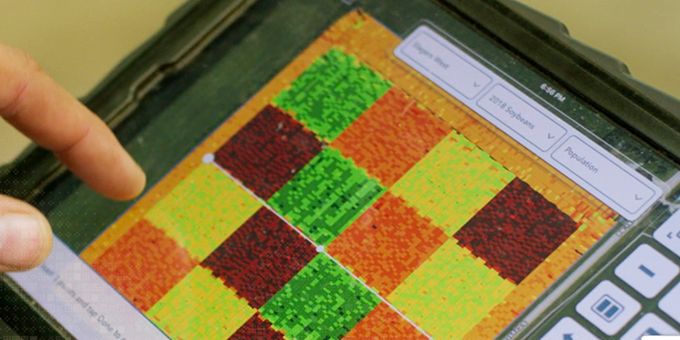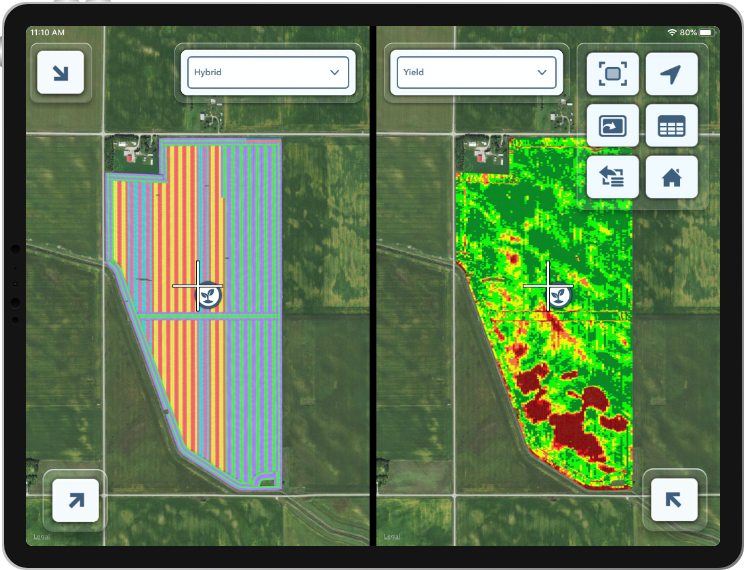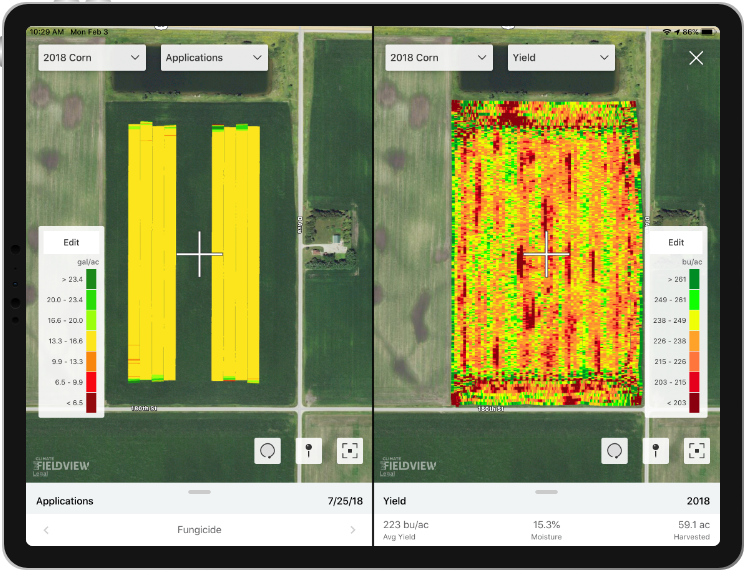The recent advances of digital tools has made it much easier to run test plots — which has changed how I look at them for my operation and how I incorporate the findings into planning for next season.
 How to Simplify Your Test Plots and Maximize Investments
How to Simplify Your Test Plots and Maximize Investments

Marcus Hess, Illinois Farmer | The Climate Corporation
Remember the old days of running test plots? Stopping in the field to place marker flags and make the necessary changes. Then returning in the fall to — with any luck — find the flags and weigh each load. Not to mention the deskwork that followed to evaluate the results. And for me, with a full schedule that includes a 3,200-acre operation plus my wife and three kids, it wasn’t always possible to spend the time on test plots.
But like many of you, I felt it was important to try new approaches and see how it worked on my own fields. Luckily, the recent advances of digital tools has made it much easier to run test plots — which has changed how I look at them for my operation and how I incorporate the findings into planning for next season.

First, Gather the Right Field Data
On my corn planter, I have a Precision Planting® 20|20 monitor to pull data into FieldView™. For my sprayer, I use a FieldView™ Drive to collect as-applied data from each pass. In the fall, I’m able to gather harvest data and compare planting and applications with yield to see what worked and what didn’t. Once you know what you’re looking for, the answer is just a few clicks away.

Determine What to Test
There are only so many things I can test on my own. I also rely on recommendations from my agronomist, seed dealer as well as county-level controlled studies. This allows me to focus my test plots on where I might be able to get the most bang for the buck. Each season provides an opportunity to learn something new and weigh the benefits of different approaches. You may also have a theory on something to change or try out in certain fields and that’s also a good place to start.
Test Out Hybrids Before Going All-In
One of those focus areas for me is testing new hybrids before I go all-in on one. This is true for both “offensive” hybrids that have good high-end yield potential along with “defensive” hybrids that might be better for rougher parts of land. I’ve also had the opportunity to work with Bayer’s Field Testing Networking (FTN) program which lets me try out certain hybrids a year before they’re on sale.
I personally run split planting trials to compare hybrid performance in a field. I also use FieldView seed scripts for custom prescription recommendations on seed population to help optimize the potential of each field. Overall, I’m able to compare my workhorse hybrids against some of the newer ones available and see what comes out on top.
Compare Spraying Approaches to See Where to Invest
Much like I check my hybrids, I want to understand the impact of my spray passes. This year, I ran a foliar application on beans, along with fungicide and insecticide. I skipped passes so that one pass with the sprayer would have the foliar and then the pass in between would just be fungicide and insecticide. Here again, I’m able to compare against the yield results in the fall and weigh the cost versus the benefit of applying the foliar. Of course, this same testing approach works for other types of fertility or crop protection programs to better understand the return on your dollars and time.

We often hear that test plots are critical to advancing farming. While I believe that’s true, I think it’s also important to understand where it’s worth spending your own time to test versus relying on other sources of information. Digital tools have greatly simplified the process and can help paint a clearer picture of where to invest and what works for your fields to maximize the opportunity in every acre.
I hope this helps as you’re considering test plot possibilities for your operation. Best of luck as you plan toward a successful spring.
About Marcus Hess
Marcus Hess farms 3,200 acres of corn and soybeans on his family farm in central Illinois, which dates back to 1869. Marcus was a commodities trader at the Chicago Board of Trade for ten years before rejoining his dad and mom on the family’s operation. Marcus is happily married and keeps busy with his three young daughters.
The content & opinions in this article are the author’s and do not necessarily represent the views of AgriTechTomorrow
Comments (0)
This post does not have any comments. Be the first to leave a comment below.
Featured Product

